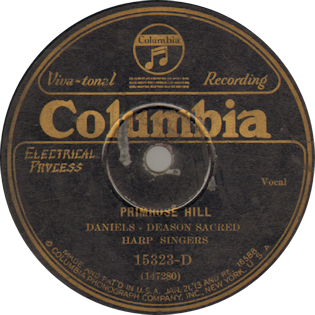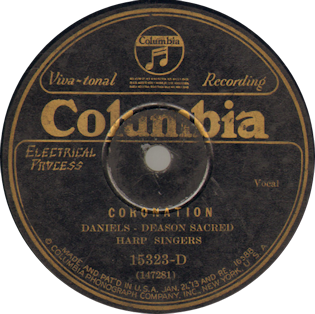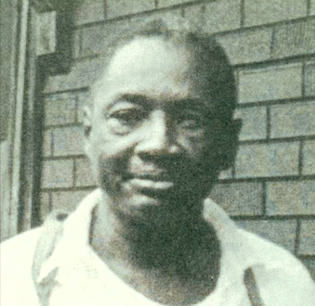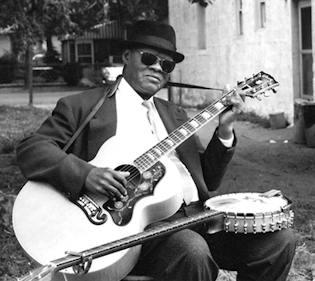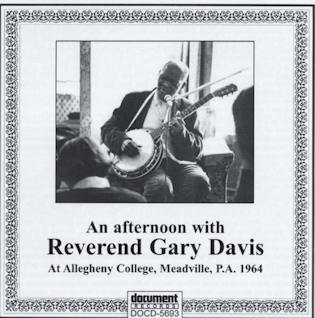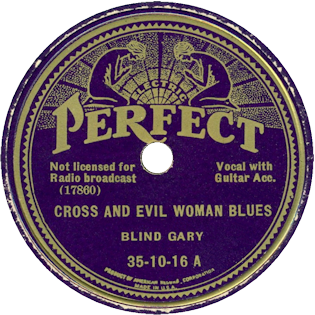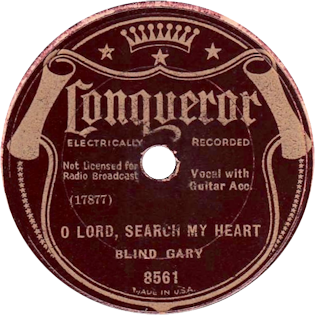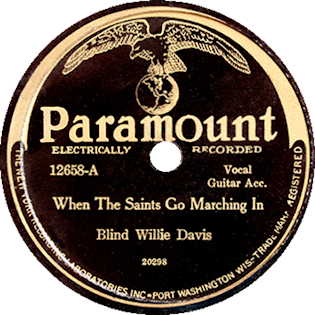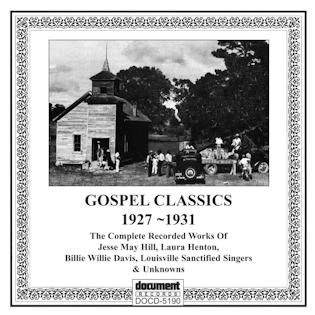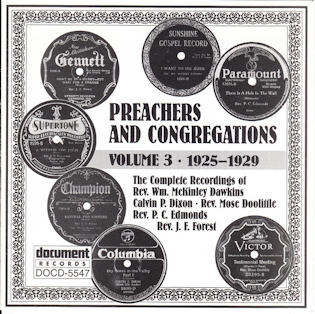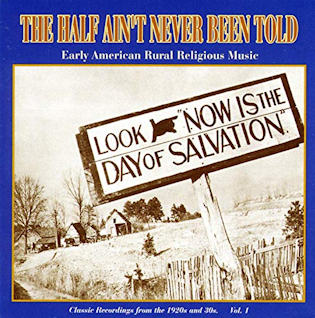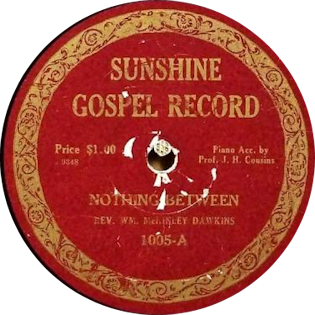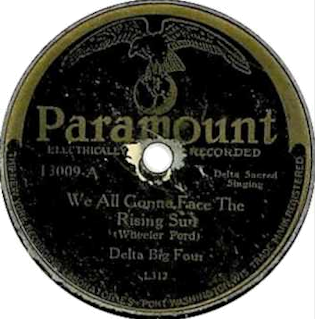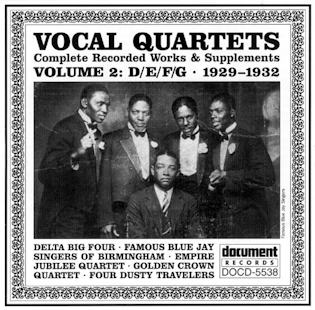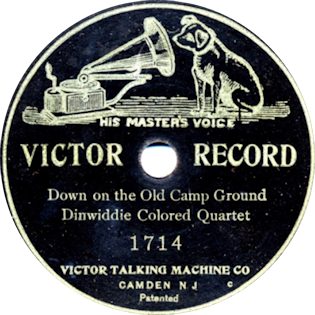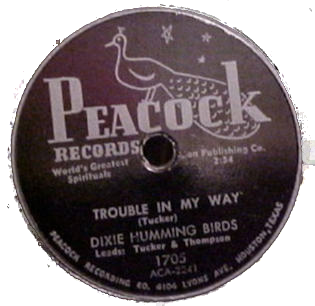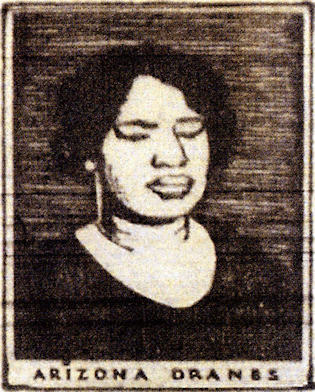 A B C D E F G H I J K L M N O P Q R S T U V W X Y Z
A B C D E F G H I J K L M N O P Q R S T U V W X Y Z
To help with further browsing click on the large ‘Initial’ to return to the Early Gospel Singers Introduction, or click another initial to take you to details of more early gospel singers.
____________________________________________________________________________________________________________________________
| Name: | Deacon Leon Davis |
| Location: | ? |
| Born: | ? |
| Died: | ? |
| Biography Synopsis: | ? |
| Recording career: | ? |
| Most popular song(s): | |
| References / links: | |
| Images: | 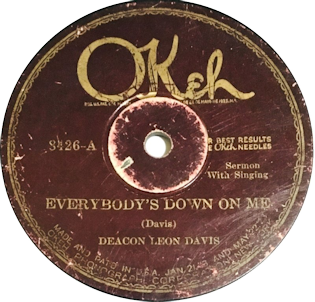  |
| Name: | Walter Davis |
| Location: | |
| Born: | |
| Died: | |
| Biography Synopsis: | |
| Recording career: | |
| Most popular song(s): | |
| Musical Influences: | |
| References / links: | |
| Images: |
| Name: | The Deep River Songbirds |
| Aka: | |
| Location: | Cleveland, Ohio |
| Born: | |
| Died: | |
| Biography Synopsis: | All female group comprising: Ruth Wallace, Cornell Thompson, Beatrice Addie, Josaphine Wilkes, Primel Wilkes, and Eloise Burnett. |
| Recording career: | 1940s – 1950s |
| Most popular song(s): | |
| Musical Influences: | |
| References / links: | ‘Cleveland’s Gospel Music’, Frederick Burton, Arcadia Publishing 2003 |
| Images: |
| Name: | Rev. Emmet(t) Dickinson |
| Location: | |
| Born: | |
| Died: | |
| Biography Synopsis: | |
| Recording career: | |
| Most popular song(s): | |
| Musical Influences: | |
| References / links: | |
| Images: |
| Name: | Dixie Hummingbirds |
| Location: | Philadelphia |
| Biography Synopsis: | A pioneering force behind the evolution of the modern gospel quartet sound, the Dixie Hummingbirds were among the longest-lived and most successful groups of their era; renowned for their imaginative arrangements, progressive harmonies, and all-around versatility, they earned almost universal recognition as the greatest Southern quartet of their generation, and their influence spread not only over the world of spiritual music but also inspired secular artists ranging from Jackie Wilson to Bobby “Blue” Bland to the Temptations. Formed in Greenville, SC, by James B. Davis, the Dixie Hummingbirds began their career during the late ’30s as a jubilee-styled act; joined in 1938 by 13-year-old baritone phenom Ira Tucker and bass singer extraordinaire Willie Bobo, a former member of the Heavenly Gospel Singers, the group made its recorded debut a year later on Decca, issuing singles such as “Soon Will Be Done with the Troubles of This World,” “Little Wooden Church,” and “Joshua Journeyed to Jericho.”
Upon relocating to Philadelphia in 1942, the Hummingbirds’ popularity began to grow — Tucker, in particular, wowed audiences with his flamboyant theatrics, rejecting the long tradition of “flat-footed” singers rooted in place on-stage in favor of running up the aisles and rocking prayerfully on his knees. By 1944, he was even regularly jumping off stages — indeed, the frenetic showmanship of soul music may have had its origins in Tucker’s manic intensity, itself an emulation of country preaching. At the same time, the Hummingbirds’ harmonies continued to grow more sophisticated; the addition of Paul Owens completed the quartet’s development, and together he and Tucker honed a style they dubbed “trickeration,” a kind of note-bending distinguished by sensual lyrical finesse and staggering vocal intricacy. Their virtuosity did not go unnoticed by audiences, and throughout the mid-’40s — an acknowledged golden age of a cappella quartet singing — the group regularly played to packed houses throughout the South. Under names like the Swanee Quintet and the Jericho Boys, the Dixie Hummingbirds also regularly appeared on Philadelphia radio station WCAU; it was as the Jericho Boys that they auditioned for the legendary producer John Hammond, who in 1942 booked them into the Cafe Society Downtown, then the Greenwich Village area’s preeminent showcase for black talent. By 1946, the Hummingbirds were again recording, cutting sides for labels including Apollo and, later in the decade, Gotham and Hob. In 1952, what many consider the group’s definitive lineup — a roster of Tucker, Davis, Bobo, Beachey Thompson, James Walker (replacing Owens), and ace guitarist Howard Carroll, a roster that held intact for close to a quarter century — signed to the Peacock label, where over the course of the following decade they recorded a series of masterpieces including 1952’s “Trouble in My Way,” 1953’s “Let’s Go Out to the Programs,” 1954’s “Christian’s Testimonial,” 1957’s “Christian Automobile,” and 1959’s “Nobody Knows the Trouble I See.” After earning a standing ovation for their performance at the 1966 Newport Folk Festival (captured on the Gospel at Newport LP), the Hummingbirds essentially retired from mainstream appearances to focus solely on the church circuit. They did, however, burst back into the popular consciousness in 1973, backing Paul Simon on his pop smash “Loves Me Like a Rock.” The death of Willie Bobo in 1976 brought to a sad end a lengthy chapter of the Hummingbirds’ history — his membership in their ranks dated back to the late ’30s — but the surviving members forged on; just two years later, Ebony magazine named them “The World’s Greatest Gospel Group.” After Davis retired in 1984, Tucker was the last remaining link to the quartet’s formative years; despite the subsequent deaths of Walker in 1992 and Thompson in 1994, Tucker continued leading the group at the century’s end, recruiting new blood to keep the Dixie Hummingbirds’ spirit alive for years to follow, celebrating their seventh decade with 1999’s Music in the Air: The 70th Anniversary All-Star Tribute. The group continued under Tucker’s leadership until June 2008, when Tucker died due to complications stemming from heart disease. The remaining members of the group declared they would press on and keep the legacy of the Dixie Hummingbirds alive. Biography by Jason Ankeny, Source: AllMusic.com |
| Recording career: | Late ’30s – present |
| Most popular song(s): | “Joshua Journeyed to Jericho”
“Loves Me Like A Rock” “Amazing Grace” (Grammy Award) |
| References / links: | Video: The Dixie Hummingbirds: 80 Years Young
The first feature length documentary/concert film featuring the life and history of the Dixie Hummingbirds was released in 2008 in commemoration of their extraordinary eighty years as performers. Produced and directed by award-winning filmmaker Jeff Scheftel, and Executive produced by University of Hawaii Musicologist Jay Junker, featuring extensive interviews with Ira Tucker, Sr., archival footage, and following the current group as they perform in numerous venues, and rehearse under Mr. Tucker’s spirited guidance, in their hometown of Philadelphia, and across the vast landscape of America. Source: Gospel Music Hall of Fame National Endowment for the Arts – recipients of a National Heritage Fellowship Gospel Music Hall of Fame – 2008 Inductees |
| Images: | 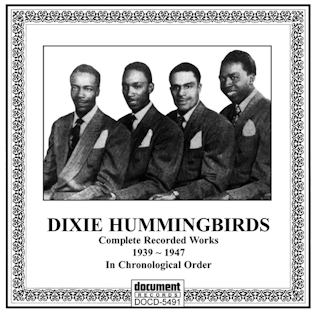 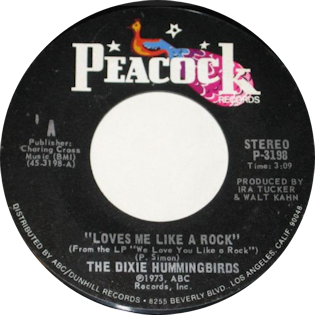
|
| Name: | Dixie Sacred Trio |
| Location: | ? |
| Born: | |
| Died: | |
| Biography Synopsis: | ? |
| Recording career: | |
| Most popular song(s): | |
| Musical Influences: | |
| References / links: | |
| Images: | 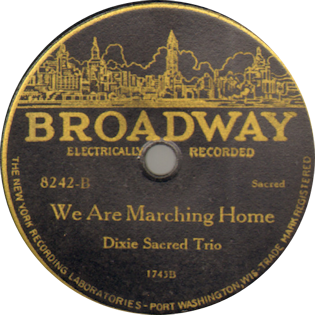 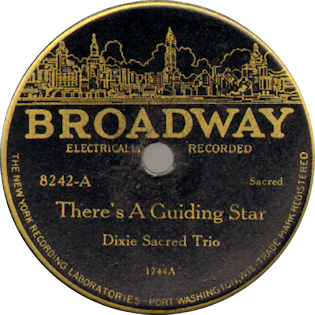 |
| Name: | Dixie Symphony Four |
| Aka: | Dixie Symphony Singers |
| Biography Synopsis: | ? |
| Recording career: | Some time between 1929 – 1934 |
| Most popular song(s): | Six recorded works:
Swanee River Little David Play on your Harp Good News, The Chariot’s Coming Leaning on The Lord Swing Low, Sweet Chariot Sweet Kentucky Babe |
| References / links: | Essay: History & Mystery (a long shot in early blues & gospel) |
| Images: | 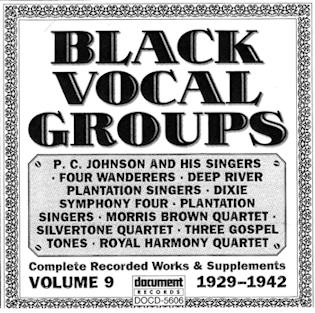 |
| Name: | Calvin P. Dixon |
| Location: | |
| Born: | |
| Died: | |
| Biography Synopsis: | |
| Recording career: | |
| Most popular song(s): | |
| Musical Influences: | |
| References / links: | Discography of American Historical Recordings |
| Images: | 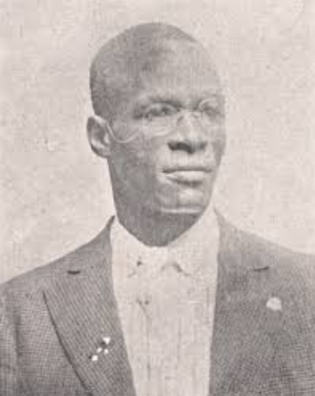 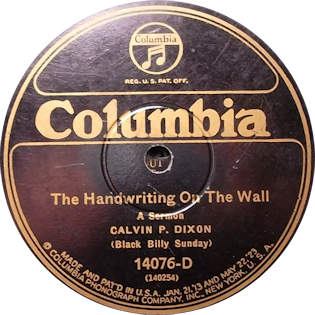 |
| Name: | Rev. Mose Doolittle |
| Location: | ? |
| Born: | |
| Died: | |
| Biography Synopsis: | ? |
| Recording career: | 1926 |
| Most popular song(s): | Testimonial Meeting |
| Musical Influences: | |
| References / links: | |
| Images: |  |
| Name: | Thomas A. Dorsey (‘Georgia Tom’) |
| Location: | |
| Born: | |
| Died: | |
| Biography Synopsis: | |
| Recording career: | |
| Most popular song(s): | |
| Musical Influences: | |
| References / links: | |
| Images: |
| Name: | Arizona Juanita Dranes |
| Aka: | Also known as “Blind Arizona”. Her correct last name has been reported as “Drane”, as listed in the official enrolment record for the 1896-1897 school year at the Texas School for the Blind and Visually Impaired (but was this just a miss-spelling?). |
| Location: | Oklahoma City and Dallas, TX |
| Born: | 4th April 1891 (or 1894), Greenville (or Sherman or Dallas), TX |
| Died: | 27th July 1963, Los Angeles |
| Biography Synopsis: | Arizona Juanita Dranes, of mixed African-American and Mexican-American heritage, was born on April 4, 1894, in Greenville, Texas. Her mother was Cora Jones, and her father’s surname was Dranes. She lost her sight in an influenza outbreak early in her childhood. She attended the Institute for Deaf, Dumb and Blind Colored Youths (later Texas Blind, Deaf, and Orphan School) in Austin from 1896 until 1910, when she graduated. There she received her first music lessons. Some years after graduation, perhaps about 1920, she helped Ford Washington McGee (Rev. F.W. McGee), a singing preacher, establish a Church of God in Christ in Oklahoma City . She later lived in the musically rich Deep Ellum district of Dallas, where she learned piano and developed her own distinct “sanctified” style of playing, known as “gospel beat.” It combined the ragtime and barrelhouse traditions to produce a rolling blues sound. Dranes’s piano playing was accompanied by her penetrating singing, which derived from the emotional shout song of traditional gospel music.
Eventually she became a regular pianist and singer for various traveling ministers of the Church of God in Christ (COGIC ), a national black Pentecostal church that has since developed into the largest of its kind. Dranes spent much of this early period with COGIC traveling through Texas and Oklahoma and aiding in the “planting” of new churches. In the mid-1920s she settled back in the Dallas-Fort Worth area and was soon spotted by OKeh Record Company scout Richard M. Jones. The company took Dranes to Chicago for recording sessions in 1926 and again held sessions in Dallas in 1928. [In 1926 recording sessions she was supported by the Rev. F.W. McGee and His Jubilee Choir. Rev. McGee himself went on to become a popular recording artist for Victor and he had Dranes to thank for this.] During her contract with OKeh she recorded more than thirty tracks, including such gospel standouts as “I Shall Wear a Crown” and “My Soul Is a Witness for the Lord.” Though she was a top gospel star for the OKeh label, correspondence between Dranes and the record executives indicate that she was often underpaid. With the onset of the Great Depression, Blind Arizona Dranes fell into obscurity. She continued her performances in church services and may have lived in Memphis and possibly Oklahoma City in the 1930s. Her last known public concert was held in Cincinnati in 1947. In 1948 she moved to Los Angeles, where she lived until her death on July 27, 1963. Her death certificate listed her profession as a missionary and that she was buried at the Paradise Memorial Park in Santa Fe Springs, California. She was one of the most influential and innovative gospel pianists of the twentieth century. Source: Bradley Shreve, “DRANES, ARIZONA JUANITA [BLIND ARIZONA],” Handbook of Texas Online (http://www.tshaonline.org/handbook/online/articles/fdr16). Published by the Texas State Historical Association. ____________________________________ “Juanita” Arizona Dranes was born in Dallas, Texas around 1905. Born blind, Dranes is believed to have been of Mexican and African-American heritage, and was raised in the Church of God in Christ in the Dallas/Fort Worth area. Dranes’ enthusiastic shouting and piano playing were so dynamic that they practically recommended themselves, and she was only about 20 years of age when a Fort Worth-based minister, Samuel Crouch, suggested to Okeh talent scout Richard M. Jones that Dranes be given a recording test. Blues singer Sara Martin agreed to travel to Fort Worth and help the blind Dranes make it to Chicago for her test on June 17, 1926. It was so successful that the six records resulting from it were all issued. Arizona Dranes was used to working with a chorus, and on two titles, “John Said He Saw a Number” and “My Soul Is a Witness for the Lord,” Richard M. Jones and Sara Martin stepped in to fulfill this role. Dranes’ last two selections of June 17, 1926 can best be described as sanctified barrelhouse piano solos, practically unique in the 1920s. Yet they are representative of a sound and style within gospel piano playing that may be heard yet today. Dranes returned to Chicago on November 15, 1926, this time partnered with Rev. Ford Washington McGee and His Jubilee Choir. The four numbers recorded that day proved the first of thirteen recording sessions for McGee who, as Rev. F.W. McGee, would become a popular recording artist for Victor, and may have recorded in the 1940s with the Library of Congress. McGee owed this honor to Dranes, who set up the date with Okeh. It is believed that Arizona Dranes is the pianist on three sides made backing up gospel singer Jessie May Hill for Okeh on May 5, 1928 and two others with McGee the following day. On July 3, 1928 Dranes led a chorus of her own on six sides, of which two were withheld; these would be her last recordings under her own name. Dranes was likely the pianist, and possibly the coordinator, of two Columbia sessions held in Dallas in December 1928 with the Texas Jubilee Singers and the Rev. Joe Lenley. Although Dranes maintained contact with Columbia/Okeh scouts for at least a year afterward, Dranes would never record again herself. Arizona Dranes is credited by some experts to have invented the “barrelhouse,” ragtime-derived style of gospel accompaniment, and at this point in time there is no known evidence to the contrary. Prior to Dranes, musical accompaniment in African-American gospel is practically unknown, as before 1920 it was only considered appropriate to present sanctified music in an a cappella setting. From 1928 forward, Dranes remained a top-billed artist in black gospel circles, and somewhere along the line she relocated from Texas to Chicago. Dranes’ latest-known advertising places her in Cleveland in 1947; after that Arizona Dranes literally disappears from historical mention, but is believed to have died around 1960. Listening to such riveting performances as “Lamb’s Blood Has Washed Me Clean,” “Crucifixion” and “I’ll Go Where You Want Me to Go” one can’t imagine being in Dranes’ presence without being swept up in the sheer excitement and power of her performances. Although the name Arizona Dranes is almost totally unknown to today’s general public, the style of music she is said to have pioneered continues in sanctified churches literally everywhere; such was her vast and important impact on American music. Source: All Music Guide |
| Recording career: | 1926 – 1928 |
| Most popular song(s): | “I Shall Wear a Crown”, “My Soul Is a Witness for the Lord” and “He Is My Story” |
| Musical Influences: | Later gospel artists, such as Roberta Martin, Clara Ward, Madame Ernestine B Washington and Goldia Haynes, were heavily influenced by her piano playing and her nasal singing style also had an impact on artists such as Sister Rosetta Tharpe. |
| References / links: | Check out the Book / Disc combo: ‘He Is My Story : The Sanctified Soul of Arizona Dranes’ by Michael Corcoran. |
| Images: | 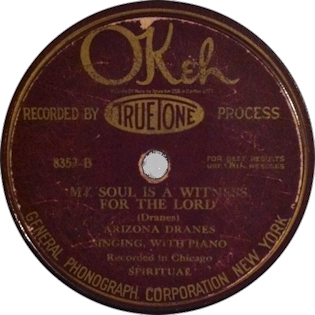 
|
| Name: | Dunham Jubilee Singers |
| Location: | Bessemer, AL |
| Biography Synopsis: | The Dunham Jubilee Singers were a pioneering gospel quartet based in Westfield and Bessemer. The group was led by trainer Charlie Alf “Son” Dunham, who brought bass singer Leon Patrick with him when he moved to Jefferson County from Selma around 1920.
The group performed under numerous line-ups as Dunham trained nearly a whole generation of quartet singers. Among those he tutored were Jimmie Hollingsworth, Charlie Beal, Sollie Pugh, L. V. Cox, James Allen, Arthur Turner, and Sam Middlebrooks. Dunham was enormously influential in the development of quartet singing in the Birmingham District. His groups also expanded the repertoire of quartet singing from Gospel standards to popular songs, work songs, blues, and Dunham’s original compositions. The group toured around the South and midwest, sometimes picking up new members. Source: Bham Wiki In 1996 Document reissued the complete recordings of the Dunham Jazz & Jubilee Singers, an Alabama-based vocal harmony group whose legacy was rescued from oblivion by various diligent record collectors and a production staff engaged in a vast multi-genre reissuing campaign of unprecedented proportions. Music on this album was transferred (without noise reduction) directly from original 78-rpm platters dating back to the years 1927-1931. The first two selections were cut for the Gennett label in Birmingham, Alabama. For the blues “Honey Turn Your Damper Down” the group was identified as the Dunham Jazz Singers, while the arcane “You Can Hear Those Darkies Singing” apparently called for them to be billed as the Bessemer Quartette. They became the Dunham Jubilee Singers the following year when they recorded “Holy Is My Name” and three other gospel titles at Gennett’s world headquarters in Richmond, Indiana. The pianist heard on “Calvary” is believed to have been director and lead vocalist Charles Alf “Son” Dunham. This ensemble’s big break came at the end of May 1930 when it made its first Columbia recordings in New York City. “Louisiana Babe” and “My Mama’s Baby Child” were released under the name of the Bessemer Blues Singers. Billed as the Bessemer Singers and performing under the direction of James P. Johnson, Dunham’s unit backed blues singer Bessie Smith on her only two topically religious recordings 11 days later. It’s a shame that Document didn’t include those two titles on this collection. The sudden death of Dunham’s longtime collaborator and bass singer Leon Patrick precipitated a withdrawal from New York and the temporary dissolution of the ensemble. After Dunham returned to Alabama and rounded up some of the original members of the group, ten more sides were waxed in New York during May and June of 1931. Some of the source material for these tracks is of less than optimum quality, and by the producer’s own admission tracks 11 and 13 were obtained on “inferior tape” and “included for completeness only,” as no copies of the original recordings were known to exist. Even taking into account occasional flaws in audio quality, this collection provides access to cultural artifacts of great and lasting value. In their handling of great melodies like “Who Stole the Lock,” “Ephram Got the Coon,” and “If Men Go to Hell, Who Cares?,” the Dunham Jazz & Jubilee Singers built upon tradition in ways that invite comparison with Bryant’s Jubilee Quartet, the Utica Institute Jubilee Singers, and the Norfolk Jazz & Jubilee Quartet. Rather than including the Dunham unit’s historic collaborations with Bessie Smith, Document ended the set with a pair of rather forced, fast-paced theatrically comedic religious routines recorded in New York in 1930 by the Dixie Quartette, about whom nothing is known. Source: AllMusic |
| Recording career: | 1927 – 1931 |
| References / links: | Discography of American Historial Recordings |
| Images: | 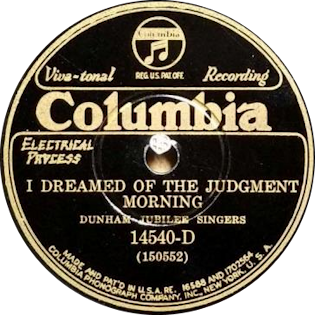  |
____________________________________________________________________________________________________________________________
 A B C D E F G H I J K L M N O P Q R S T U V W X Y Z
A B C D E F G H I J K L M N O P Q R S T U V W X Y Z
To help with further browsing click on the large ‘Initial’ to return to the Early Gospel Singers Introduction, or click another initial to take you to details of more early gospel singers.
____________________________________________________________________________________________________________________________
Please Note:
As this is a continuously developing website, several entries only give the names with no biographical details. Please be patient as these entries are included for completeness, indicating the details are ‘coming soon’ and will be added when time allows.
If there are any early (pre war) gospel singers missing from the lists that you think should be included, please email the details to alan.white@earlygospel.com. Thank you in advance for your assistance.

